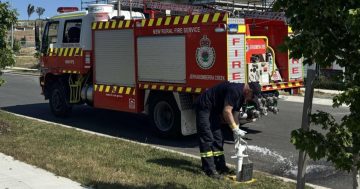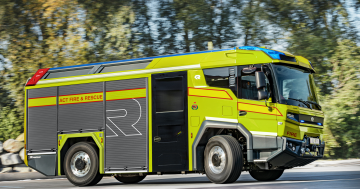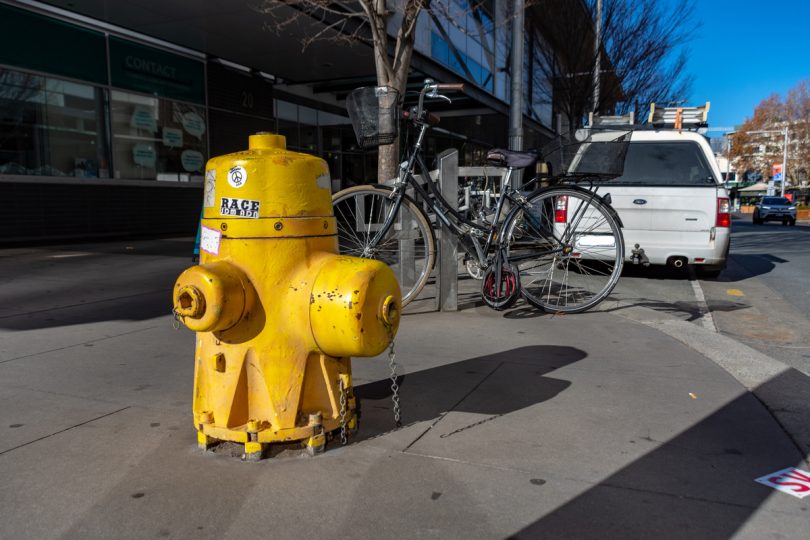
Icon Water is in the process of removing all of Canberra’s yellow fire hydrants to make way for dual-spring hydrants. Photo: Icon Water.
They’ve been a part of the street scene since the 1980s. But Icon Water has been removing Canberra’s yellow fire hydrants and replacing them with safer, more up-to-date firefighting equipment since August 2021.
Icon Water project manager Prashanti Nandapalan said the replacement works had been slightly delayed by the COVID-19 lockdown, but there were only a couple left to go.
“Modern firefighting technologies have made these high-capacity hydrants obsolete,” she said.
“Maintenance is becoming more expensive due to a lack of spare parts and their modern equivalents are much safer to use for firefighters.”
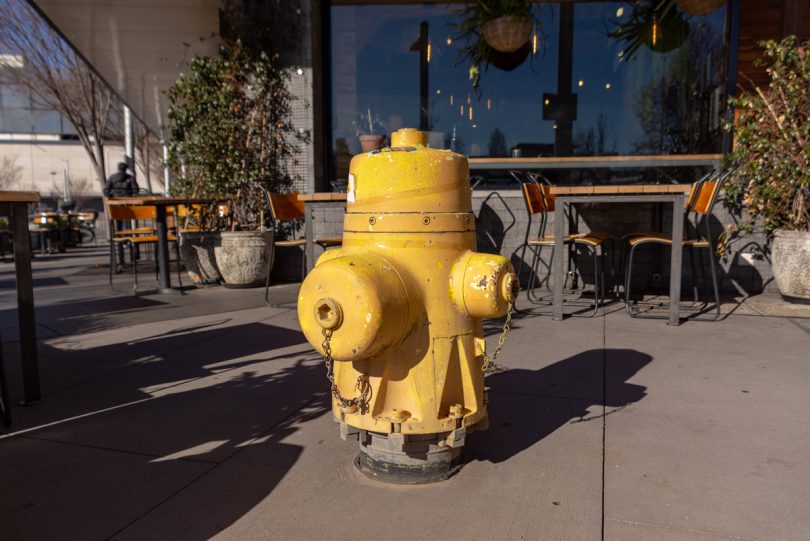
Three outlets in the yellow hydrants allowed for different hose sizes. Photo: Icon Water.
Ms Nandapalan said the new in-ground dual-spring hydrants meant graffiti and incidents of vehicles hitting the equipment were almost a thing of the past.
The yellow hydrants date back to the 1980s when firefighters called for better water pressure in built-up areas.
Ms Nandapalan said firefighters made do with the traditional or in-ground equipment before the high-capacity hydrants were introduced.
“In areas of commercial development and around schools and flats, the spacing was usually a bit closer than usual, but nothing special.”
Calls for better fire protection at a few developments in the 1970s led to the installation of batteries of standard hydrants on a manifold.
Ms Nandapalan said it was during this decade Canberra started to think more seriously about firefighting requirements.
“The local brigade produced a series of flow rates for different development types and at the top of the list they had a flow rate of 200 litres per second for major commercial development and the likes of the government office buildings in the Parliamentary Triangle,” she said.
“Analysis and tests showed that it was wasn’t practicable to get these flow rates from conventional hydrants because the number of hydrants required and the length of fire hose involved was almost ridiculous.
“This led to the idea of our high-capacity hydrants.”
She said three outlets on the yellow hydrants meant firefighters could attach three different hose sizes, depending on what was to hand or what capacity was needed.
“Two of the outlets were for conventional hose couplings and one for a larger diameter hose that the brigade had at the time.
“The larger-sized hose was possibly for sucking from ponds or pools, but it was thought it could also be used with the high-capacity hydrants.”
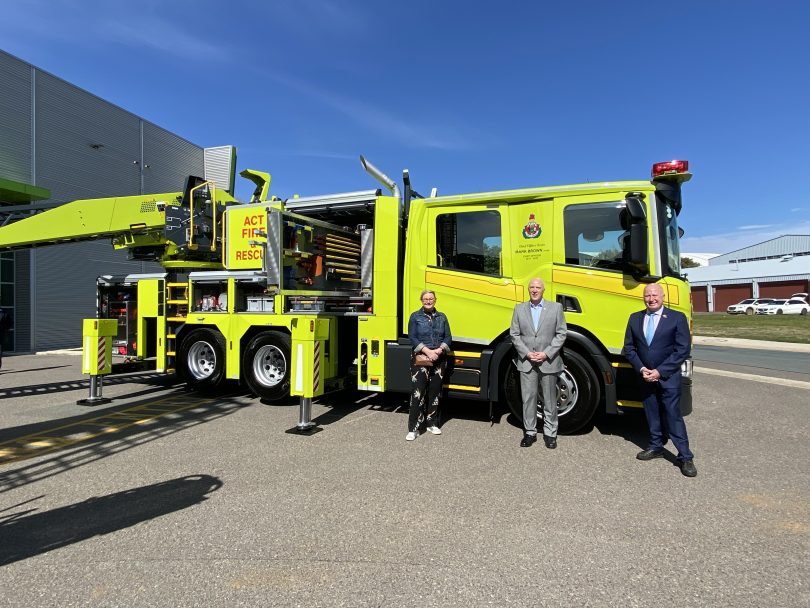
Yellow was chosen as the colour for the ACT’s firefighting equipment due to better visibility. Photo: Mick Gentleman.
And why yellow? This was chosen in line with the colour of fire engines in the ACT.
“The yellow was considered more visible than the traditional red fire engines, and if the engines were to be yellow, the high-capacity hydrants would be too,” Ms Nandapalan said.
“These hydrants were in development at around the same time that the local brigade decided to go for the yellow on their fire engines.
“The yellow was never extended to other above-ground hydrants probably because they were considered obsolete and over time were replaced with in-ground hydrants.”
She said the relentless march of technology had now come for the yellow high-capacity hydrants.
“All in all, this project aims to make Canberra safer and to use the ideal firefighting technology for our community.”
Drivers are advised not to park their vehicles too close to the new equipment so firefighters can easily access the outlets.
“A driver must not stop within one metre of a fire hydrant, fire hydrant indicator, or fire plug indicator,” according to the ACT Road Transport Regulation.
For more information visit Icon Water












